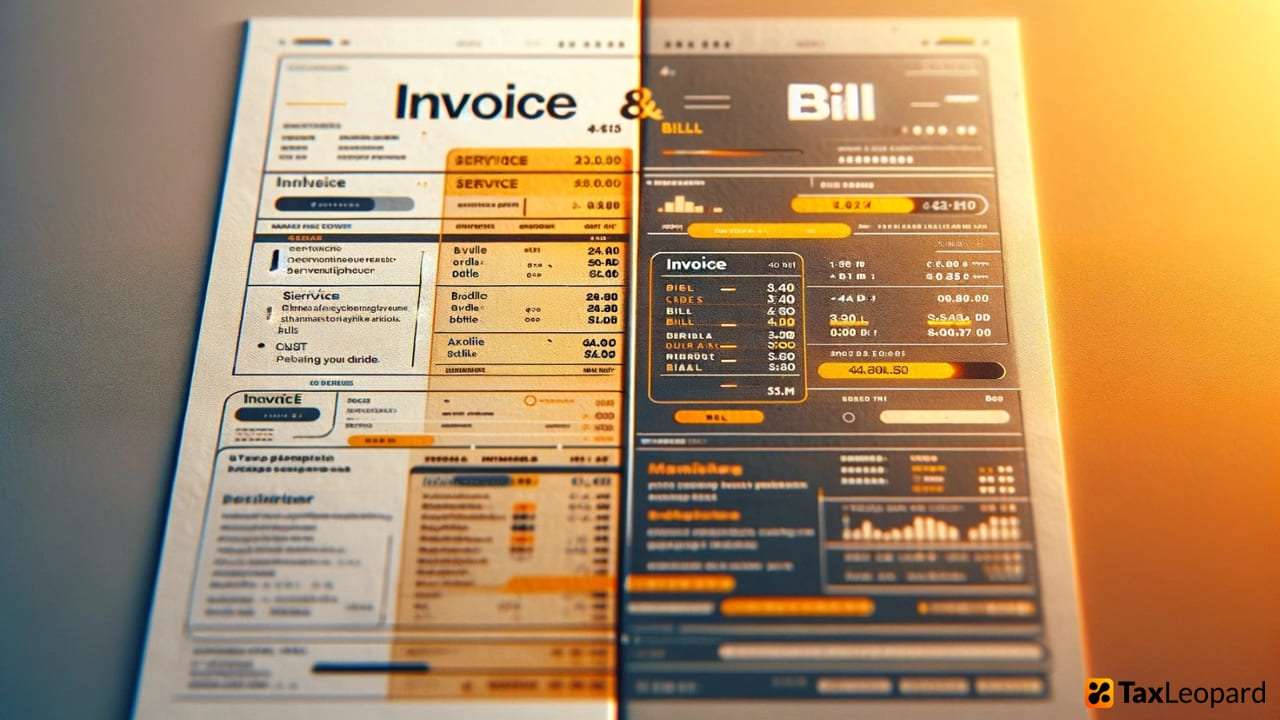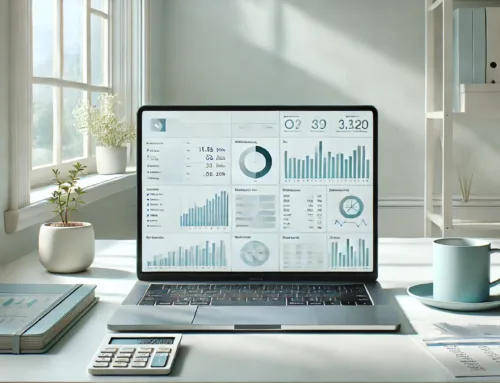“Invoice vs Bill” Though they may seem similar at a glance, the differences between them are significant and impact the dynamics of business transactions. A seller issues an invoice to a buyer as a comprehensive document detailing the provided products or services, and it primarily aims at requesting payment. On the other hand, a bill typically presents a clear outline of charges for goods or services, and it’s commonly encountered in daily consumer dealings. This knowledge is essential, as it promotes accurate accounting methods and ensures efficient financial management.
Understanding Invoices and Bills
Invoices and bills, integral to financial transactions, often seem similar but serve distinct roles. Primarily in B2B contexts, an invoice is a statement listing goods or services a business provides and requesting payment. It typically includes dates, quantities, prices, and terms, specifying details. Conversely, a bill in B2C interactions directly states the amount due for goods or services the business renders. In essence, while both are requests for payment, their usage, content, and context vary significantly.
Types of invoices and bills
Invoices and bills come in various forms, each with unique purposes and contexts.
Invoices:
- Standard Invoice: The most common type, detailing the transaction between seller and buyer.
- Proforma Invoice: A preliminary bill of sale, often before delivering goods or services.
- Commercial Invoice: Specifically used in international trade, detailing goods sold for customs purposes.
- Recurring Invoice: For ongoing services, sent at regular intervals.
- Credit Invoice: Issued to refund or provide a credit to the buyer.
Bills:
- Bill of Sale: A receipt that transfers ownership of an item.
- Utility Bill: Regular statements for services like electricity or internet.
- Bill of Lading: A document in shipping evidencing contractual carriage terms.
- Medical Bill: Issued by healthcare providers for services rendered.
- Legislative Bill: A proposed law is presented for debate and approval.
Invoice vs Bill: 5 Major Differences
1. Purpose and Function:
Businesses primarily use invoices in business-to-business transactions. They serve as detailed records of goods or services provided, indicating the amount due for payment. Invoices, often used for tracking sales, managing inventory, and recording accounts receivable in financial statements, streamline financial management. Invoices are formal requests for payment, often used for tracking sales, managing inventory, and recording accounts receivable in financial statements.
2. Legal Implications:
Invoices have significant legal implications in business dealings. They act as a contractual agreement, where the issuer expects payment within a specified period. Businesses can use invoices as evidence in legal disputes over payment, enhancing their legal standing. Invoices can be used as evidence in legal disputes over payment. They also play a crucial role in tax filings, as they detail the sales transaction.
3. Content and Detail:
Invoices are detailed documents. They include specific information such as the seller’s and buyer’s contact details, a list of products or services provided, individual prices, the total amount due, payment terms, and a unique invoice number. The detailed nature of invoices is crucial for record-keeping and accounting purposes. Invoices, detailing transactions comprehensively, are vital for accurate accounting. Bills, in contrast, are more straightforward and contain less detail. They usually list the purchased items, the total amount due, and the date of the transaction.
4. Format and Flexibility:
An invoice often has a standardized and formal format. A specific layout follows to maintain consistency, especially in larger organizations. Automation and integration with accounting systems benefit from this standardization. Easier integration with modern accounting software results from using standardized invoices. Additionally, the seller and buyer can negotiate the flexibility of payment terms and methods. However, bills are generally more uniform and standardized across various industries.
5. Usage in Business Cycle:
Invoices play a crucial role in the business cycle, particularly in managing cash flow. A business issues them after delivering goods or services and before receiving payment; thus, they play a key role in managing accounts receivable. Invoices assist in tracking sales and managing debts, which are crucial for financial forecasting. Businesses use invoices to track sales, manage debts, and forecast revenues. On the other hand, businesses use bills at the point of sale for immediate settlement.
Accounting and Record-Keeping
Invoice in Accounting
In accounting, an invoice is more than just a payment request. It serves as a crucial document reflecting the sales transactions of a business. When an invoice is issued, it typically triggers the recording of a sale in the company’s financial statements, even if payment has not yet been received. This practice aligns with the accrual basis of accounting, where revenues are recognized when earned, regardless of when the payment is made. Invoices are therefore essential for maintaining accurate records of revenue and accounts receivable. They also play a significant role in managing cash flow and are instrumental in the audit process, providing verifiable evidence of transactions.
Bill in Financial Statements
When a business receives a bill, it usually pertains to a purchase or an expense that the business has incurred. In accounting terms, the company typically records the receipt of a bill as an increase in its accounts payable – a liability that indicates the business owes money to another entity. This recording is consistent with the accrual basis of accounting, recognizing expenses when they are incurred, not necessarily when they are paid. Bills are key in tracking a business’s expenses, aiding in budget management, and ensuring accurate financial reporting. They serve as essential evidence for expenses, crucial for tax purposes and financial analysis.
Role in Business Transactions
Invoices and bills, while often used interchangeably, hold distinct roles in business transactions. They serve as vital tools in financial interactions, ensuring clarity and legal adherence.
Invoices in Business: Invoices are pivotal for managing cash flow in business-to-business (B2B) interactions. They detail the goods or services provided, with a clear request for payment within a specified time frame. This document is crucial for bookkeeping, as it records sales transactions and is often used for tax purposes. Invoices help businesses track their income, manage accounts receivable, and maintain clear records for auditing purposes.
Bills in Consumer Transactions: Businesses commonly use bills in business-to-consumer (B2C) transactions. These can include home services like cleaning, rubbish removal, and more. The retail and service industries commonly issue bills at the point of sale. They play a crucial role in daily financial transactions, providing consumers with a clear and immediate summary of the purchase. This straightforward financial document ensures transparency in consumer transactions and is essential for short-term revenue recording.
Conclusion
Both invoices and bills are integral to financial transactions; their uses, implications, and legal bindings vary considerably. The distinction between an invoice and a bill lies in their purpose, legal standing, and the role they play in accounting. Grasping these differences not only aids in proper financial management but also enhances business communication and legal compliance. So, when it comes to ‘invoice vs bill’, have you ever found yourself mixing them up or using them interchangeably?
FAQs
1. What is the key difference in the ‘Invoice vs Bill’ debate?
The key difference lies in their purpose: an invoice requests payment for services or goods provided, whereas a bill is a direct statement of charges owed.
2. Which document is more common in B2B transactions?
Invoices are more common in B2B transactions, detailing the goods or services provided and requesting payment.
3. How does the Invoice and Bill distinction affect accounting practices?
This distinction affects accounting, as invoices are recorded as receivables and bills as payables.
4. Can an invoice serve as a legal document in the ‘Invoice vs Bill’ framework?
Yes, in the ‘Invoice vs Bill’ framework, an invoice can serve as a legal document, especially in business-to-business transactions.
5. Regarding the Invoices and Bills, how does each impact cash flow?
Invoices impact cash flow by tracking receivables, while bills reflect payables, both influencing a business’s financial health.





